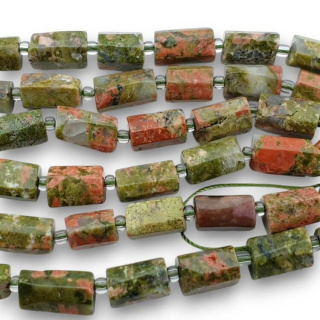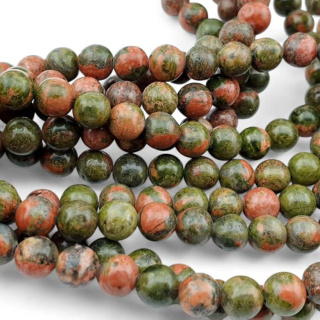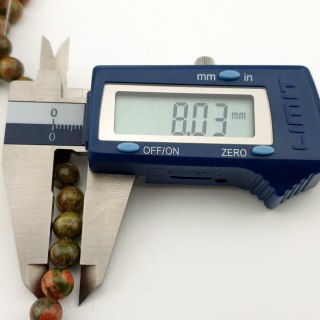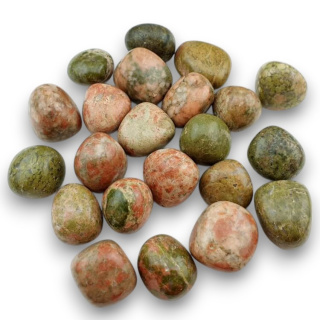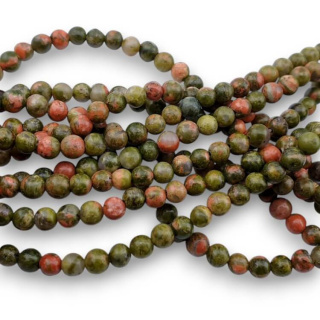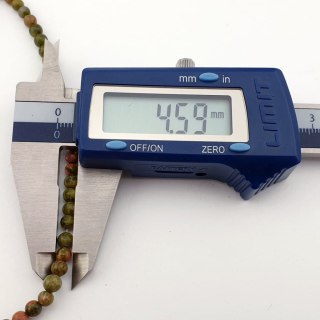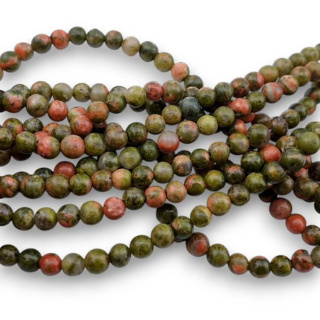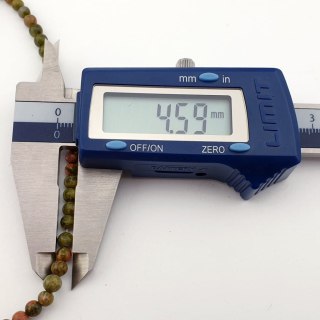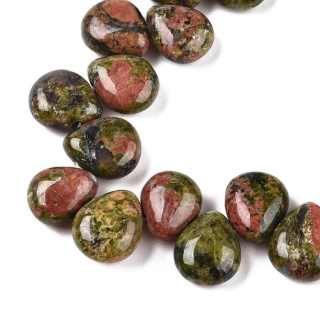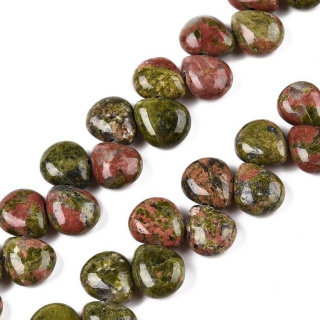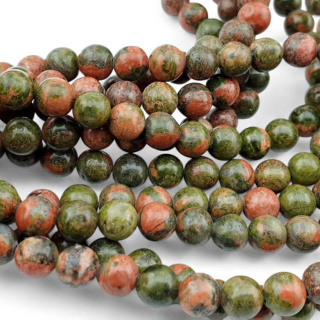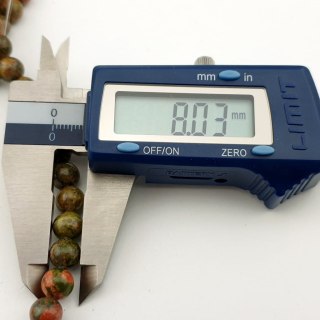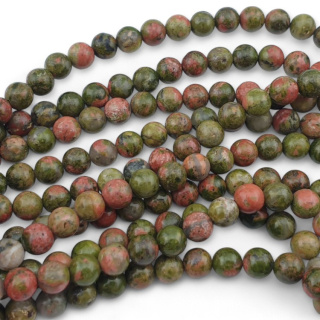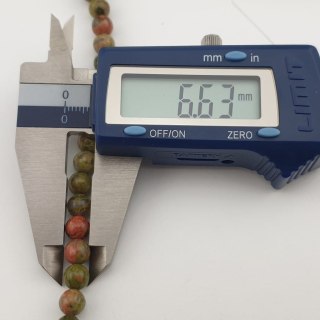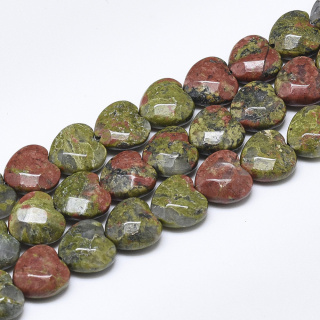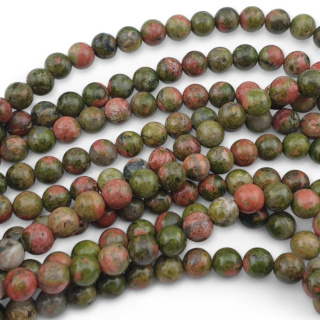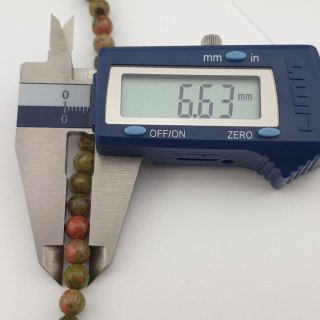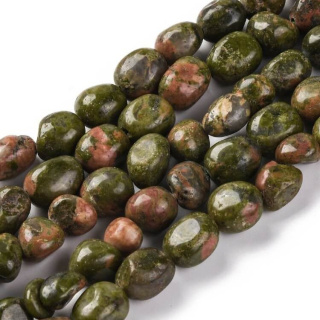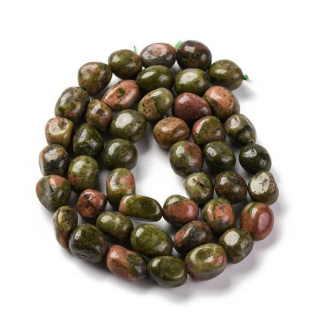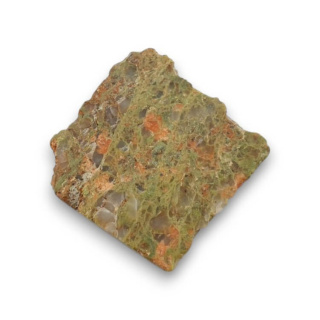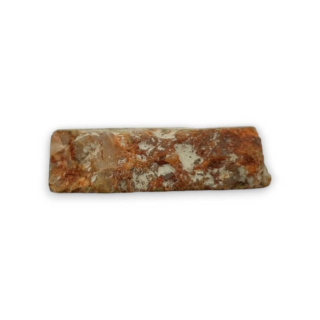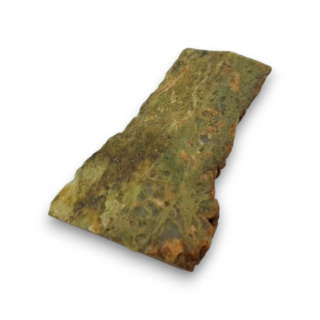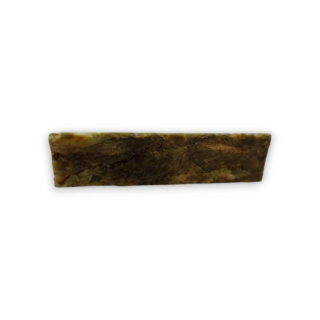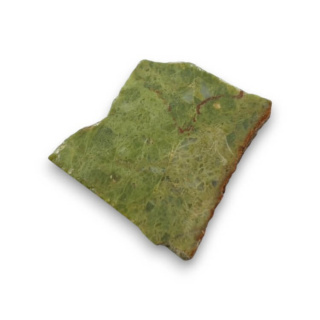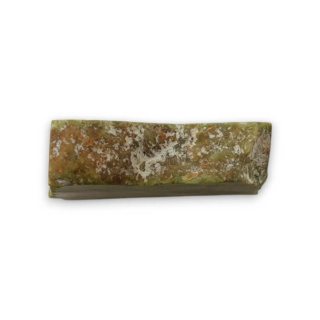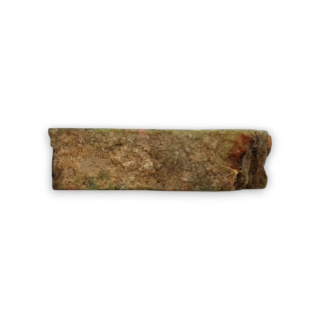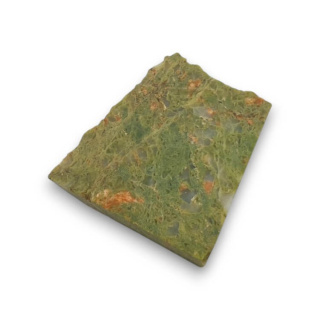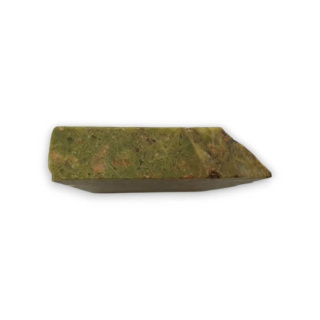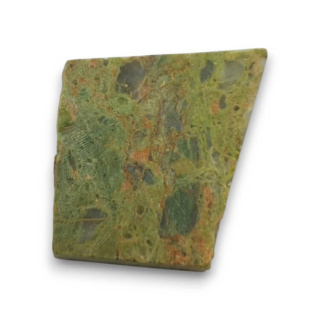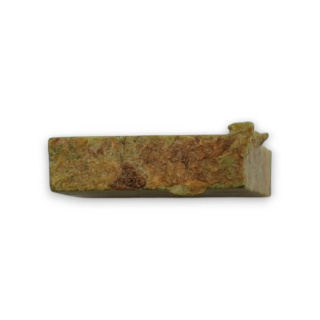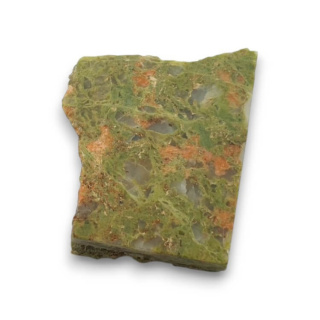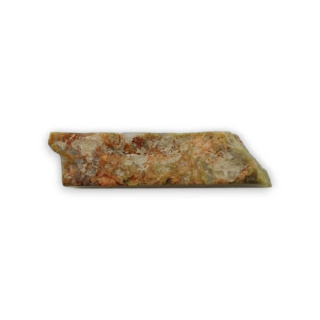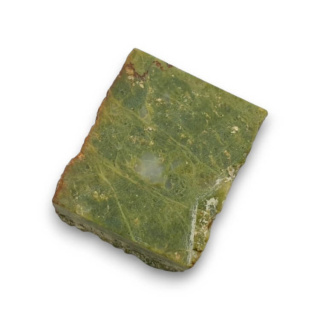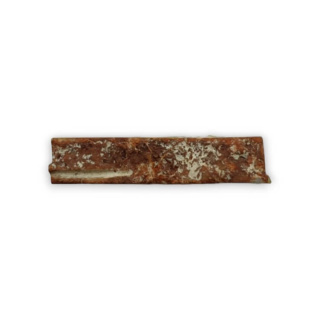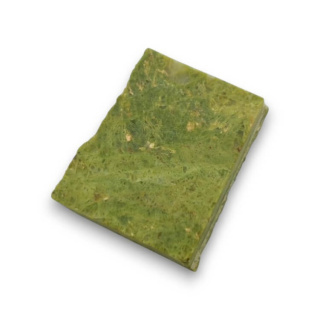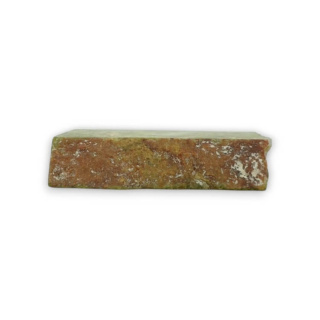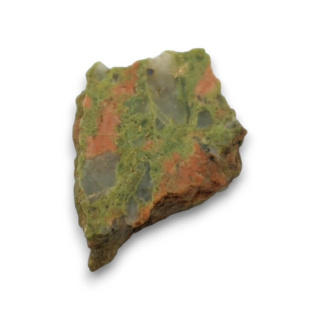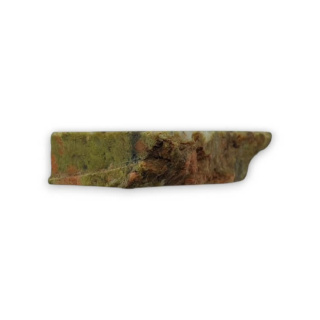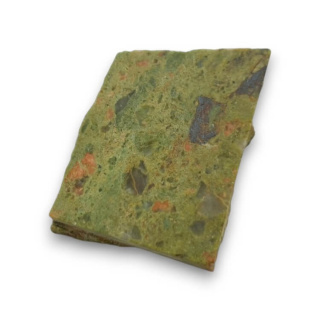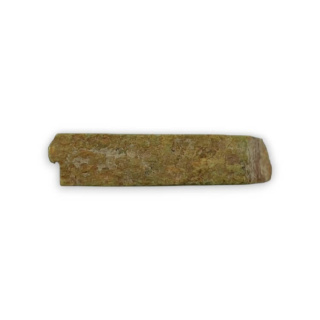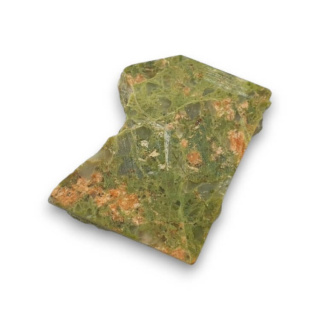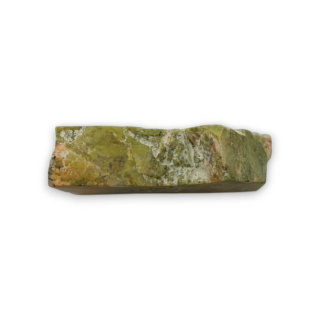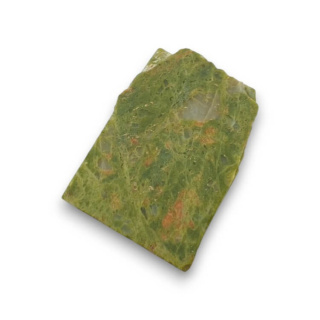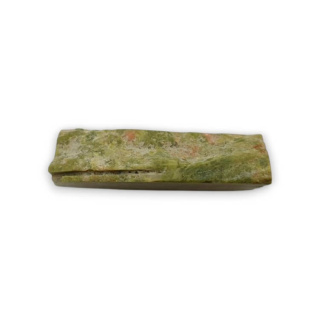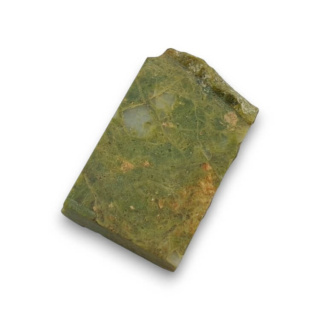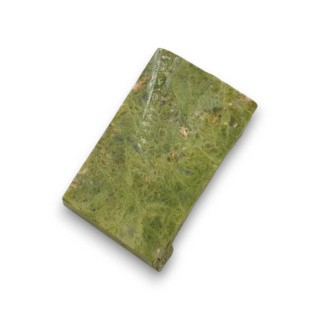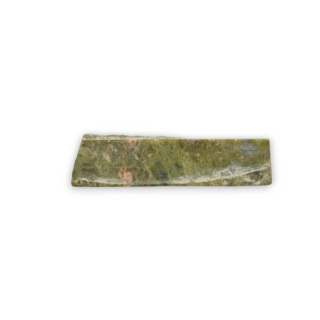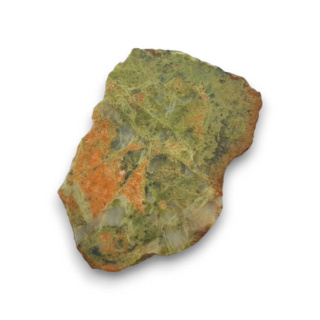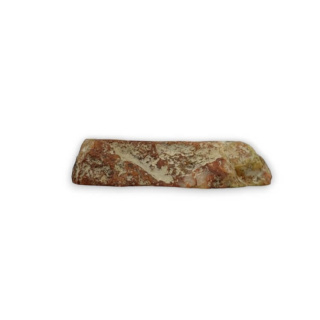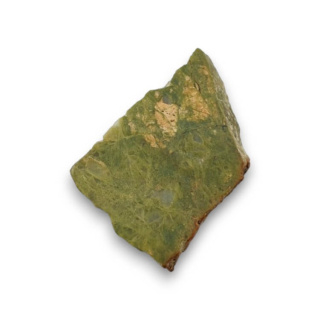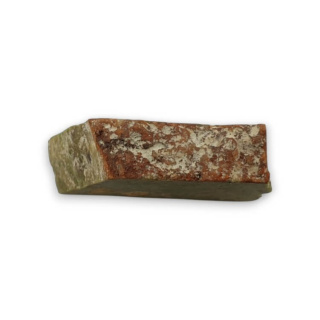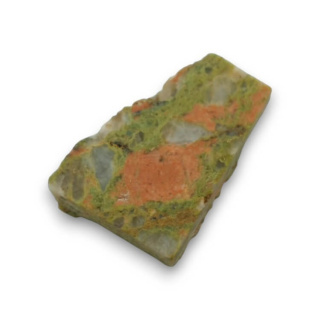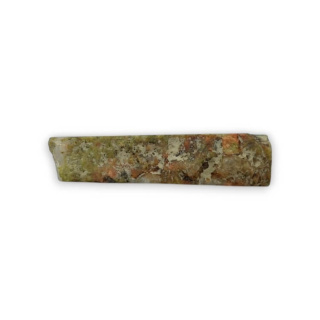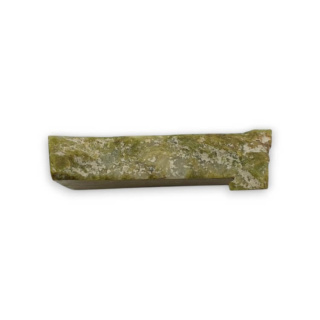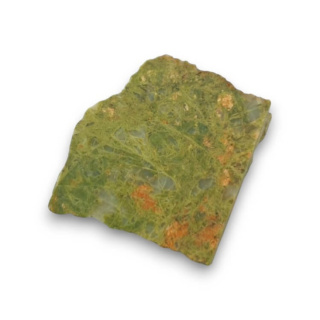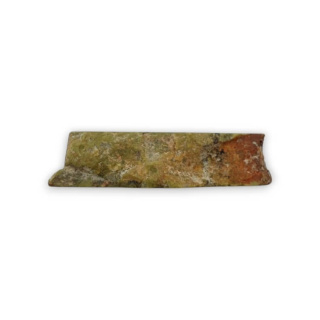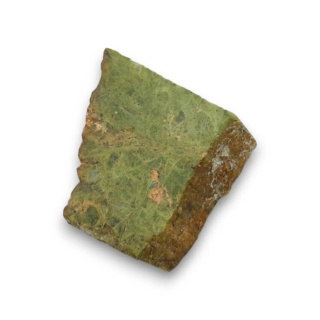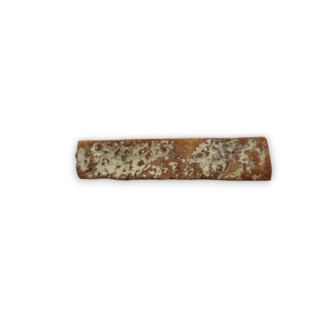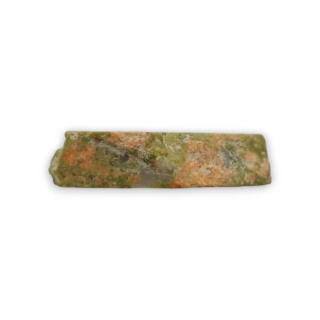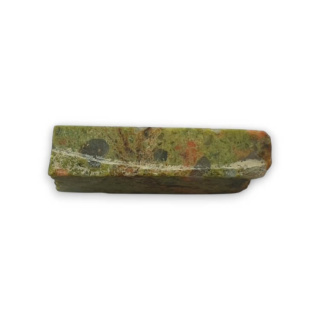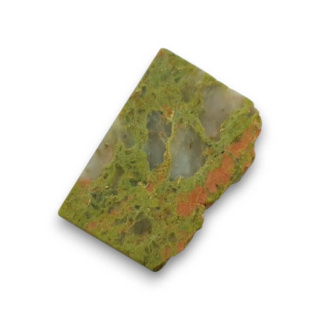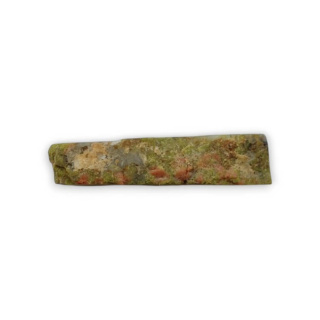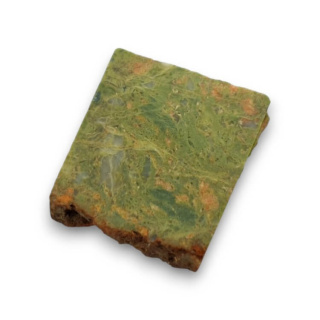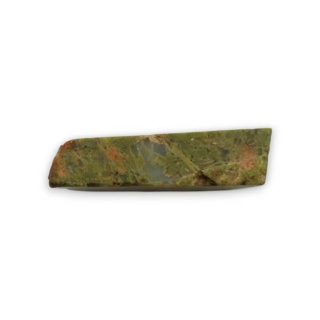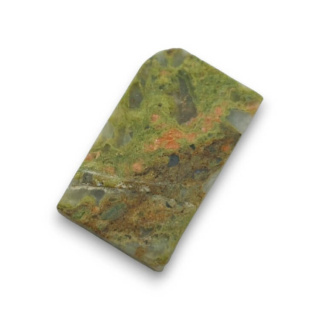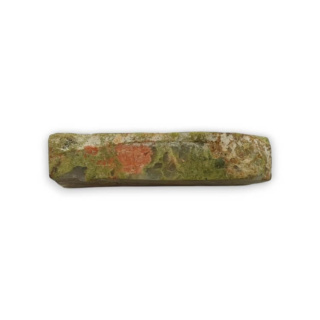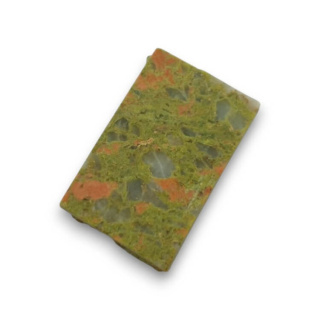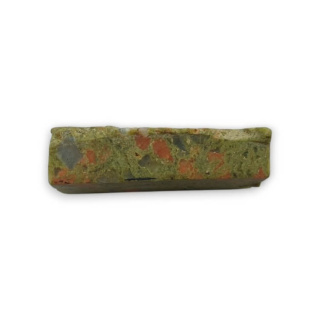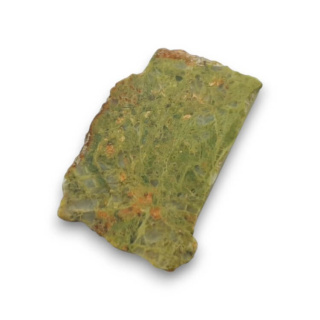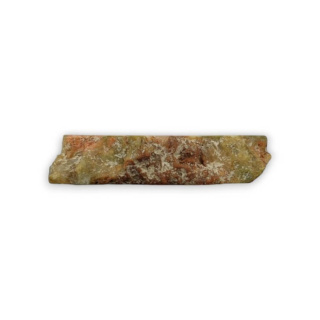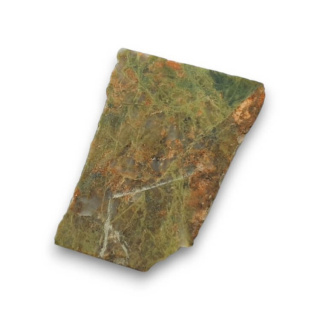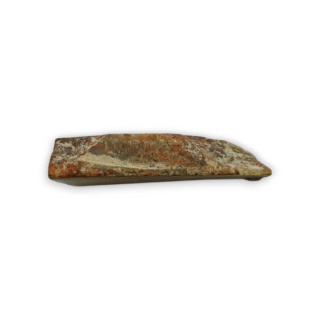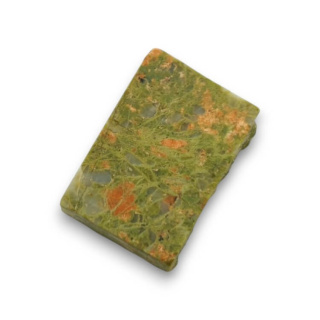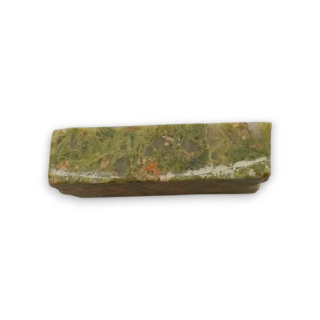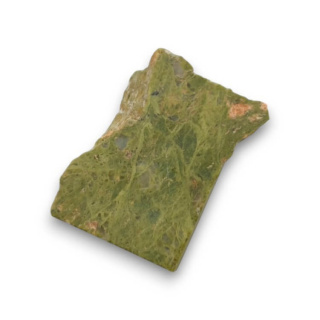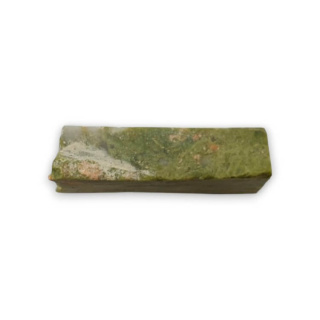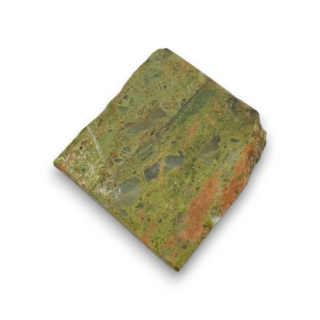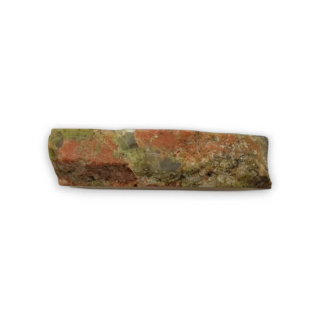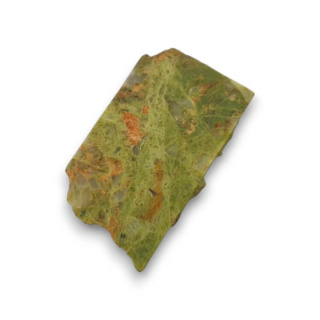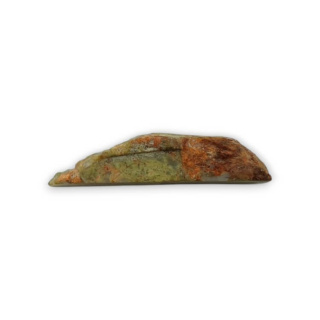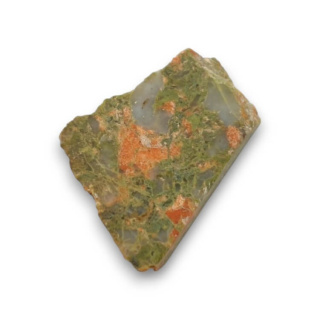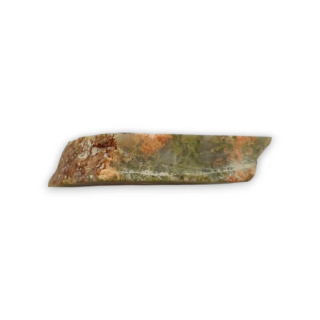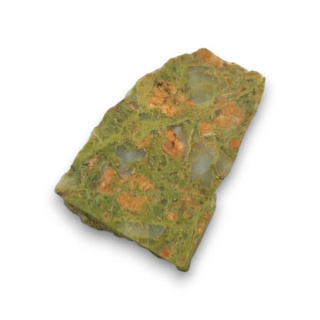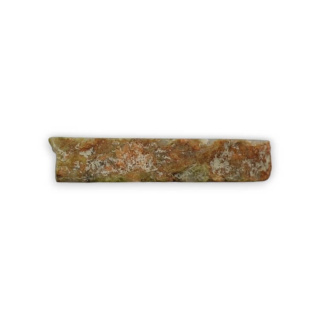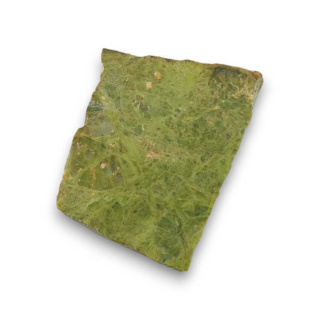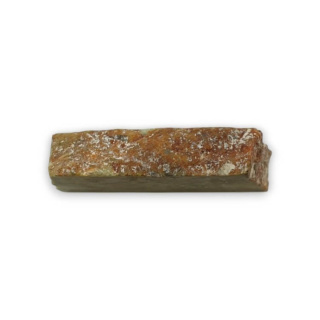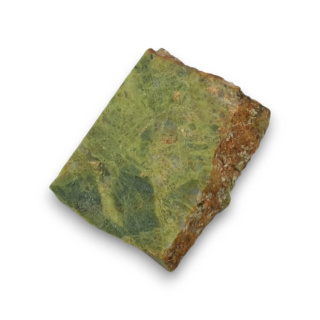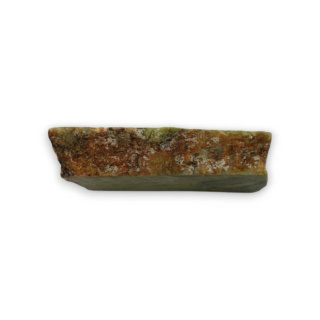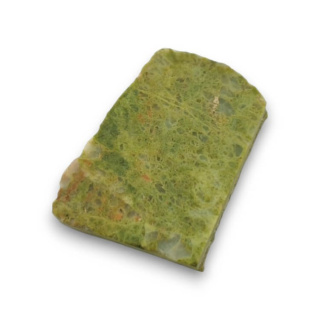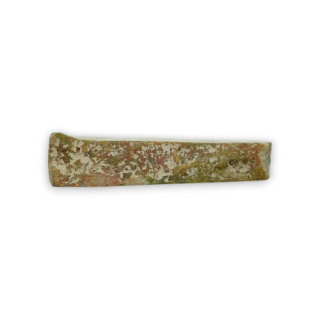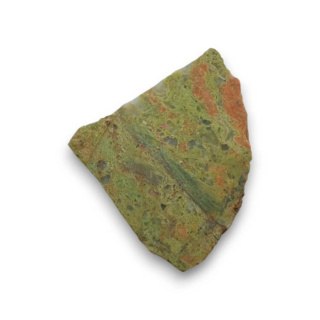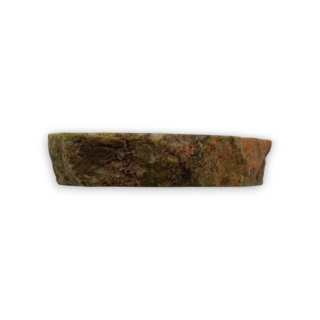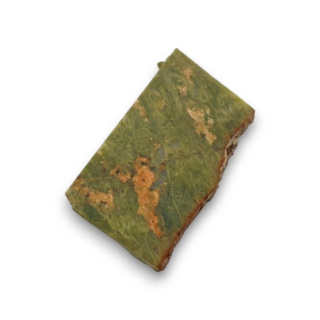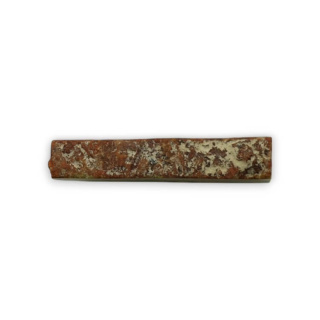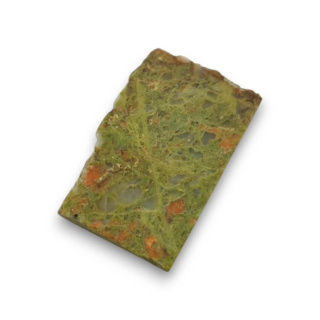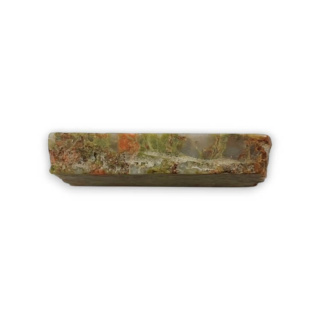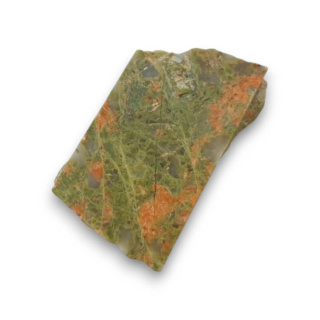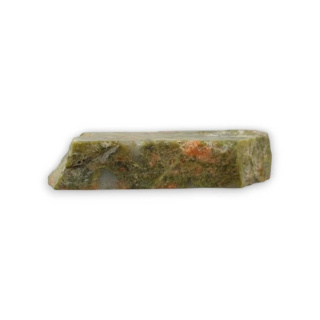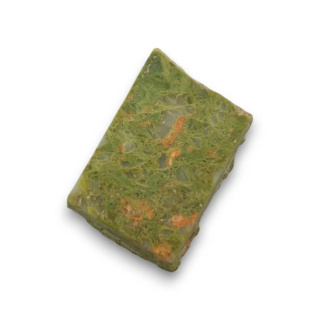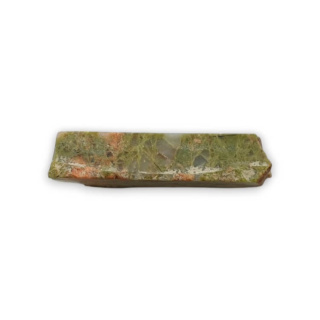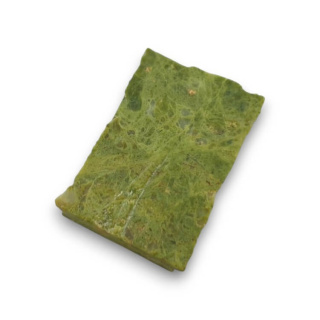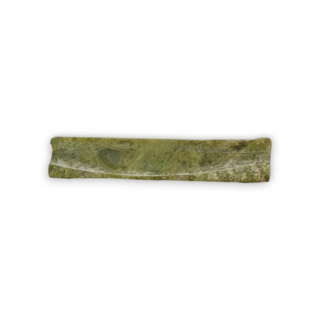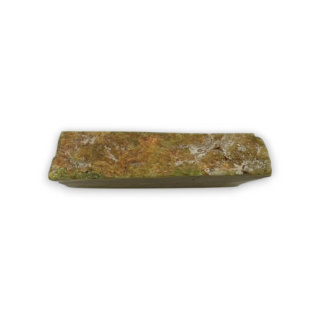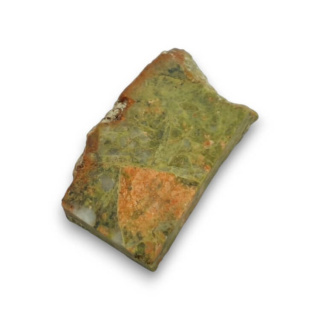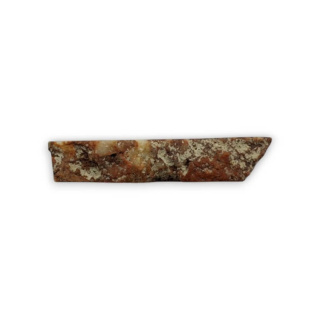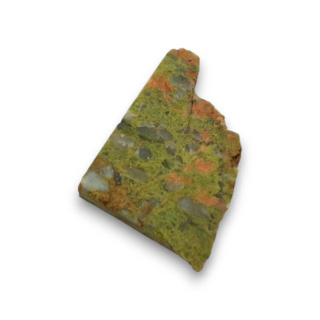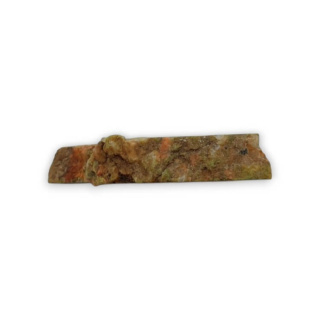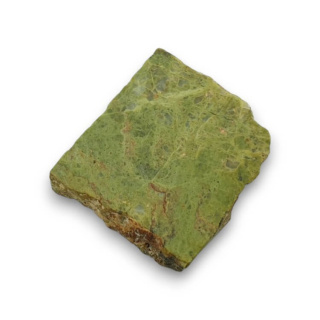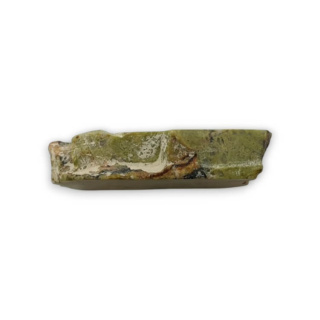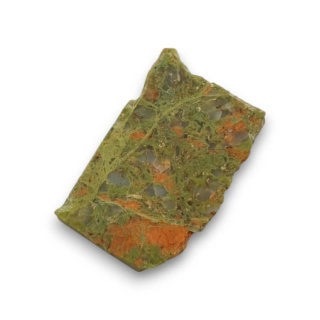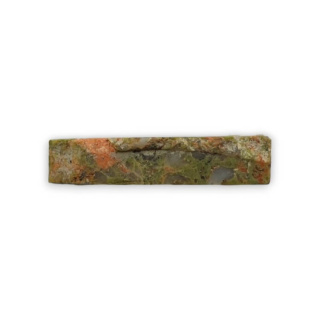Unakit - odkryj jego naturalne piękno
Liczba produktów: 89Czym jest unakit?
Unakit to rodzaj kamienia półszlachetnego, który jest stosowany w jubilerstwie i wytwarzaniu ozdób. Jego nazwa pochodzi od miejsca, w którym został odkryty po raz pierwszy, czyli w Unakas Mountains w Karolinie Północnej w Stanach Zjednoczonych. Unakit składa się z różnych minerałów, takich jak epidot, różowy skaleń, kwarc i czasami jasnozielony nefryt. Charakteryzuje się on zazwyczaj ziarnistą strukturą z dobrze widocznymi wrostkami różowych i zielonych kryształów.
Unakit ma zastosowanie w produkcji biżuterii oraz w rzemiośle. Jego naturalne barwy i wyraziste wzory sprawiają, że jest popularnym wyborem w tworzeniu różnorodnych ozdób, takich jak naszyjniki, bransoletki, pierścienie czy kolczyki. Jego atrakcyjna estetyka oraz dostępność sprawiają, że jest ceniony przez projektantów biżuterii oraz miłośników kamieni półszlachetnych.
Skąd pochodzi unakit?
Unakit po raz pierwszy został odkryty w górach Unakas w Karolinie Północnej w Stanach Zjednoczonych. Nazwa kamienia pochodzi właśnie od tego regionu, gdzie został zidentyfikowany i zbadany. Ten obszar jest znany z występowania różnorodnych formacji geologicznych, w tym unakitu, który jest stosunkowo popularnym kamieniem półszlachetnym w jubilerstwie i rzemiośle.
Jakie są główne składniki chemiczne unakitu?
Unakit składa się z różnych minerałów, które razem tworzą jego charakterystyczną strukturę i wygląd. Główne składniki chemiczne unakitu obejmują:
- Epidot: Jest to główny składnik chemiczny unakitu, który nadaje mu zielonkawo-brązowy kolor. Epidot jest minerałem z grupy krzemianów, który zawiera aluminium, żelazo i inne pierwiastki.
- Różowy skaleń: Różowy skaleń jest minerałem z grupy krzemianów. To właśnie ten składnik nadaje unakitowi charakterystyczne różowe przebarwienia.
- Kwarc: Unakit zawiera również cząsteczki kwarcu, które nadają mu wytrzymałość i przejrzystość. Kwarc jest jednym z najpowszechniejszych minerałów na Ziemi i występuje w różnych typach skał.
- Nefryt: Czasami w unakicie można znaleźć także nieco jasnozielonego nefrytu. Nefryt jest minerałem z grupy krzemianów, który jest powszechnie stosowany w wyrobie ozdób i rzeźbiarstwie ze względu na swoją twardość i atrakcyjne barwy.
Kamień unakit - właściwości fizyczne
Unakit kamień naturalny ma kilka charakterystycznych właściwości fizycznych, które nadają mu wartość i sprawiają, że jest ceniony w jubilerstwie oraz w produkcji ozdób. Niektóre z tych właściwości to:
- Twardość: Unakit ma umiarkowaną twardość, co oznacza, że jest wystarczająco trwały, aby być wykorzystywanym w produkcji biżuterii, ale jednocześnie wystarczająco delikatny, aby umożliwić szlifowanie i formowanie.
- Kolory: Unakit występuje w różnorodnych odcieniach zieleni i różu, co czyni go atrakcyjnym dla projektantów biżuterii i rzemieślników.
- Połysk: Unakit ma zazwyczaj połysk perłowy lub jedwabisty, który dodaje mu elegancji i atrakcyjności estetycznej.
- Gęstość: Jego gęstość zależy od proporcji poszczególnych minerałów składających się na unakit, ale zazwyczaj mieści się w zakresie od umiarkowanej do wyższej.
Te właściwości sprawiają, że unakit jest popularnym wyborem w produkcji biżuterii oraz w rzemiośle, a także w zastosowaniach dekoracyjnych.
Wykorzystanie unakitu w różnych branżach
Unakit kamień naturalny znajduje zastosowanie w różnych branżach ze względu na swoje unikalne cechy i atrakcyjny wygląd. Oto niektóre z głównych branż, w których jest wykorzystywany:
- Jubilerstwo: Unakit kamień półszlachetny jest popularny w przemyśle jubilerskim i jest wykorzystywany do tworzenia różnorodnych ozdób, takich jak naszyjniki, bransoletki, pierścienie czy kolczyki.
- Rzemiosło artystyczne: Ze względu na swoje estetyczne właściwości, unakit jest często stosowany w rzeźbiarstwie i innych formach rzemiosła artystycznego.
- Dekoracja wnętrz: Unakit jest również stosowany w dekoracji wnętrz, gdzie może być wykorzystywany do produkcji ozdobnych elementów takich jak ozdobne płytki, półki czy inne elementy dekoracyjne.
- Przemysł kolekcjonerski: Ze względu na swoją unikalność i atrakcyjny wygląd, unakit jest poszukiwany przez kolekcjonerów kamieni półszlachetnych i minerałów.
Jego uniwersalne zastosowanie w tych branżach sprawia, że unakit jest ceniony i powszechnie wykorzystywany w różnych dziedzinach przemysłu i sztuki.
Jakia jest najpopularniejsza biżuteria z unakitem?
Unakit, ze względu na swoje unikalne cechy i atrakcyjny wygląd, to kamień jubilerski. Oto kilka jego najpopularniejszych zastosowań w jubilerstwie:
- Naszyjniki: Unakit jest często wykorzystywany do tworzenia pięknych naszyjników, zarówno w postaci wisiorów, jak i kompletów naszyjników z pasującymi kolczykami.
- Bransoletki: Ze względu na swoje różnorodne odcienie zieleni i różu, unakit jest popularnym wyborem do produkcji eleganckich i oryginalnych bransoletek.
- Pierścienie: Unakit jest stosowany do produkcji pierścieni o różnorodnych kształtach i wzorach, które podkreślają naturalne piękno kamienia.
- Kolczyki: Kolczyki z unakitu są popularne ze względu na swój unikalny wygląd i elegancję, która dodaje wdzięku każdej stylizacji.
- Zestawy biżuterii: Z uwagi na różnorodność kolorów i tekstur, unakit jest również stosowany do tworzenia kompletów biżuterii, które zawierają naszyjniki, bransoletki, pierścienie i kolczyki, tworząc spójny zestaw.
Te zastosowania unakitu w jubilerstwie sprawiają, że unakit jest często używany w projektach biżuterii i jest popularny wśród projektantów i klientów poszukujących unikalnych i pięknych ozdób.
Czy unakit ma właściwości magiczne lub metafizyczne?
W niektórych kręgach wierzeń kamienie półszlachetne, w tym unakit, są przypisywane pewnym właściwościom duchowym i metafizycznym. Wierzy się, że unakit emanuje energię i ma kilka potencjalnych właściwości duchowych, takich jak:
- Ziemia i natura: Unakit to kamień uziemiający i jest czasem kojarzony z energią ziemi i natury, co może sprzyjać poczuciu spokoju i stabilizacji.
- Wzmacnianie relacji: Jest on również powiązany z energią wzmacniania relacji, zarówno tych romantycznych, jak i przyjacielskich, oraz budowania więzi emocjonalnych.
- Ochrona i równowaga: Niektórzy wierzą, że unakit przywraca równowagę i może wspierać ochronę energetyczną oraz równowagę mentalną.
- Wzmocnienie siły witalnej: Inne przekazy mówią o tym, że unakit może wspierać wzmacnianie siły witalnej i ducha, co pomaga w osiąganiu harmonii i poczucia dobrostanu.
Jednak należy pamiętać, że te właściwości nie mają naukowego potwierdzenia i opierają się głównie na wierzeniach i praktykach duchowych. Każda osoba może mieć własne doświadczenia i interpretacje związane z kamieniem, dlatego istnieje wiele różnych przekonań dotyczących jego właściwości duchowych.
W jaki sposób unakit różni się od innych kamieni półszlachetnych?
Unakit różni się od innych kamieni półszlachetnych ze względu na swoje charakterystyczne cechy fizyczne, chemiczne i wizualne. Oto kilka sposobów, w jakich unakit różni się od innych kamieni półszlachetnych:
- Skład chemiczny: Unakit składa się głównie z epidotu, różowego skalenu, kwarcu i czasami nefrytu, co odróżnia go od innych kamieni półszlachetnych, które posiadają swoje unikalne składy chemiczne.
- Wzorce i struktura: Unakit charakteryzuje się ziarnistą strukturą z wyraźnymi wrostkami różowych i zielonych kryształów, co czyni go rozpoznawalnym wśród innych kamieni półszlachetnych.
- Kolory: Unakit występuje w różnorodnych odcieniach zieleni i różu, co odróżnia go od innych kamieni, takich jak ametyst czy cytryn, które posiadają zupełnie inne spektrum barw.
- Zastosowania: Unakit jest stosowany głównie w jubilerstwie i rzemiośle artystycznym, ale również jako element dekoracyjny. Inne kamienie półszlachetne mogą mieć zupełnie inne zastosowania, na przykład w przemyśle technologicznym lub medycznym.
Te różnice sprawiają, że kamień unakit jest rozpoznawalnym i cenionym minerałem, który jest wykorzystywany w różnorodnych dziedzinach sztuki i rzemiosła.
Gdzie można spotkać unakit?
Unakit występuje głównie w niektórych regionach na całym świecie. Oto niektóre z głównych obszarów występowania unakitu:
- Góry Unakas w Karolinie Północnej, Stany Zjednoczone: Jest to miejsce, w którym unakit został odkryty po raz pierwszy i które dało nazwę temu kamieniowi.
- Południowa Afryka: Unakit jest również wydobywany w niektórych regionach Południowej Afryki, gdzie występują złoża tego kamienia półszlachetnego.
- Brazylia: Unakit jest również obecny w niektórych rejonach Brazylii, gdzie jest wydobywany i wykorzystywany w przemyśle jubilerskim i rzemiośle.
- Chiny: Niektóre złoża unakitu znajdują się również w Chinach, gdzie jest wydobywany i wykorzystywany zarówno w celach dekoracyjnych, jak i jubilerskich.
Ponadto unakit może być spotykany w innych regionach świata, gdzie występują odpowiednie warunki geologiczne dla jego tworzenia i występowania.
![[{[item.product.name]}]]([{[item.product.photo.url]}] 75w)

